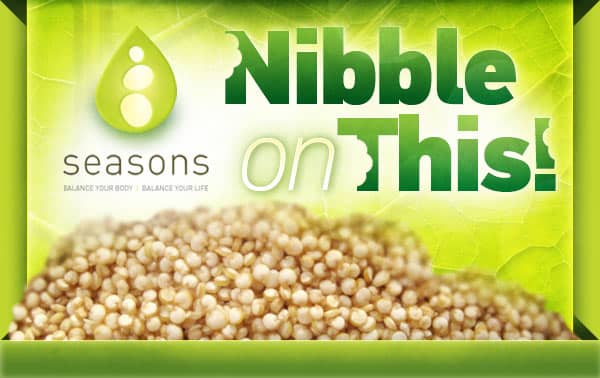Carolyn Burris MS, Nutrition
What is Healthy Heart Eating?
February was American Heart Month. Cardiovascular disease (CVD) was responsible for 32.3% of deaths in the United States in 2010. This means that one out of every 3 deaths is caused by this preventable disease. The incidence of CVD is expected to continue to increase along with a rapid rise in medical costs– the American Heart Association has projected that over the next twenty years there will be a 16.6% increase in prevalence of coronary heart disease, and that the direct medical costs attributed to cardiovascular disease will triple. Heart disease is very damaging; devastating both to our health and our economy. Risk factors are commonly found: 33% have hypertension, 13.8 % have total cholesterol above 240 mg/dl , 11.3% of U.S. adults have diabetes, and 68.8% of U.S. adults are overweight or obese. This has to be a wake-up call for Americans. Are we willing to heed what would truly help our health—genuine lifestyle changes particularly in the area of a nutrient dense, healthy fat diet?
The prevalence of CVD has been escalating since the first USDA Dietary Guidelines for Americans were released in 1980. Most Americans do not realize that these USDA guidelines were not tested! We know that because the USDA makes this statement in the 2010 Dietary Guidelines document: “The [USDA] food patterns were developed to meet nutrient needs… while not exceeding calorie requirements. Though they have not been specifically tested for health benefits, they are similar to the DASH [Dietary Approaches to Stop Hypertension] research diet and consistent with most of the measures of adherence to Mediterranean-type eating Patterns.” Also, the American Heart Association supports the more recent USDA/HHS dietary guidelines and encourages adherence though they wanted more strict reduction in sodium and saturated fat. So for prevention the AHA wants Americans to stick with the USDA dietary guidelines but emphasizing less sodium and saturated fat.
From the start, our U.S. dietary recommendations have been based as much on politics as on science. The first set of dietary goals was written by political staffers, not scientists or nutritionists. They were based on the unproven theory that reducing dietary fat would reduce heart disease, diabetes, and obesity. They directed Americans to consume less fat and more carbohydrates. These guidelines have remained remarkably consistent for the past thirty years and Americans have believed them and have followed them. We have lowered our saturated fat intake, and we have subsequently increased our carbs. Since the first guidelines were given, the number of obese Americans has more than doubled with type 2 diabetes tripling along with the previously mentioned increase in heart disease. Though the USDA denies that the guidelines have contributed to this, we need to realize that the USDA creates the policies that control nearly every aspect of our food supply and environment. It appears that its primary mandate is to increase consumer demand of U.S. agricultural products with their persuasive lobbyists. So the USDA definition of “healthy nutritious food” will directly shape what we American consumers demand and what food industries provide. What has that produced in our market? These policies have produced cheap GMO (genetically modified organisms) grains and cereal. Another noteworthy insight is that these policies have also encouraged highly processed foods with trans fat and high omega-6 inflammatory fats for shelf preservation and not heart healthy benefits. Americans have increased their caloric intake of grain-based foods based on these USDA guidelines; however, many nutrition experts are seeing that these low fat, higher carb recommendations have highly contributed to our health crises. We love our inherent preferences for sugary and starchy foods not realizing how addicting these foods are and the difficulty in breaking the high carb pattern. Why? Dietary sugars and starchy carbs cause our insulin to rise, which encourages fat storage and consequently prevents fat burning. We all our energy is stored and there is no fuel for our energy needs: we’re hungry, we’re tired, cranky and end up caving into the addicting low nutrient dense carbs again and again. When our insulin levels remain chronically elevated it becomes an independent rick factor for diabetes , hypertension, and heart disease.
My conclusion is: the USDA Dietary Guidelines with the AHA endorsement are not based on objective scientific evidence and are in fact heavily influenced by politics thus potentially causing significant harm to our health. What would be a better alternative?
I will devote my next month’s article on what is a good heart healthy, disease prevention diet. Here is a general guideline to consider with a heart healthy recipe!
Reduce your refined, processed sugar and carb laden foods. Consider limiting your grains, especially gluten containing foods. Avoid GMO grains. Increase your high fiber nutrient dense carbs such as legumes, peas, winter squash varieties and root vegetables which are anti-inflammatory.
Lower your high inflammatory fats such as high omega-6 rich corn, cottonseed, soy, sunflower oils and trans fat. Stay away from margarines and food industry developed “heart healthy fat products”. They still have a very high ratio of omega-6 fats to omega-3 fats. Eliminate fried foods. Saute, bake, grill and steam using healthy fats.
Increase your healthy fats such as organic coconut oil and olive oil, grass-fed butter, avocados, chia and flaxseed. Be careful with the high omega-6 nuts/seeds such as peanuts and sunflower.
Limit your dairy to grass fed butter, organic yogurt/kefir with small amounts of organic cheese/milk. You may want to avoid dairy and use plant base milk such as coconut, almond or flaxseed milk.
Increase your whole fruits and non-starchy vegetables: raw, sautéed and steamed such as kale, spinach, mixed lettuces, celery, carrots, cucumbers, cabbage, other greens as well as eggplant, tomatoes, mushrooms, garlic, onion, leeks, green/red/orange/yellow peppers, etc. Organic is preferred.
Increase your non-Asian, wild-caught, high omega-3 fish such as Alaskan salmon, sardines, Icelandic cod, whitefish, etc. Eliminate non-organic commercially lotted meats and poultry/eggs and use organic free range varieties, but in moderation.
Here is a heart healthy recipe to enjoy! It is gluten free and paleo friendly.
Roasted Salmon with Kale and Cabbage Adapted from Martha Stewart
PREP: 10 MINS
TOTAL TIME: 25 MINS
SERVINGS: 4
PHOTOGRAPHY: ANDREW PURCELL
INGREDIENTS
1 bunch Tuscan kale, tough stems removed, leaves thinly sliced (about 5 cups)
1/2 head Savoy cabbage, cored and thinly sliced (4 cups)
2 tablespoons organic coconut oil
4 tablespoons organic olive oil (can use 1 tablespoon of flaxseed oil or liquid coconut oil)
½ teaspoon garlic powder
Coarse whole mineral salt and pepper
4 skinless wild-caught Alaskan salmon fillets (4 to 6 ounces each)
1 teaspoon lemon zest plus 2 tablespoons juice
1/4 cup fresh dill, chopped
1 teaspoon Dijon mustard
DIRECTIONS
STEP 1
Preheat oven to 450 degrees. On a rimmed baking sheet, toss kale and cabbage with 2 tablespoons melted coconut oil and spread in an even layer; season with salt and pepper and bake 6 minutes. Stir. Season salmon and add to baking sheet. Bake until salmon is cooked through, about 10 minutes.
STEP 2
Meanwhile, whisk together lemon zest and juice, dill, garlic powder, mustard, and 1/4 cup olive oil. Season. Drizzle salmon and vegetables with dressing before serving.
Would you like more information? Get in touch with us today!








